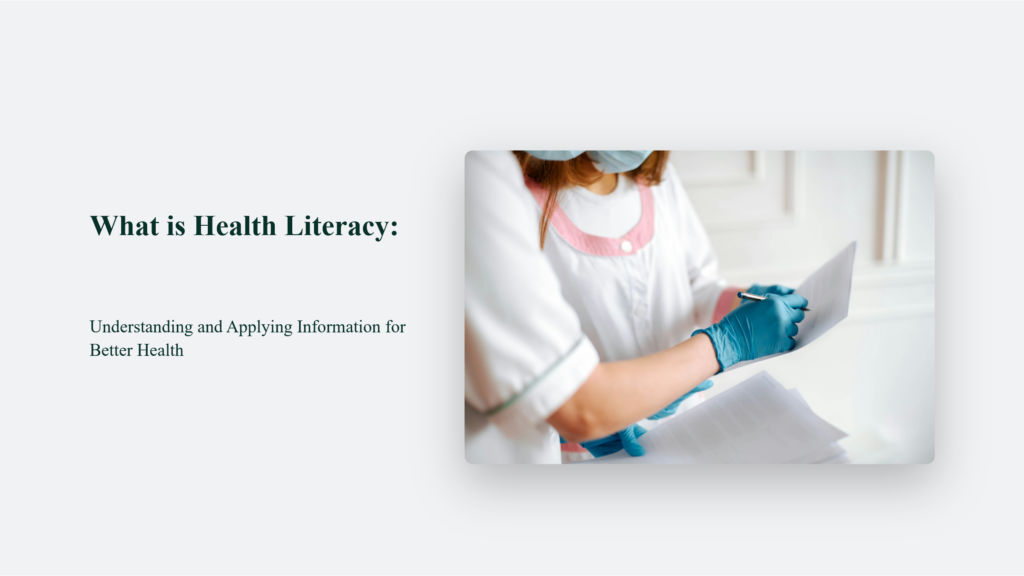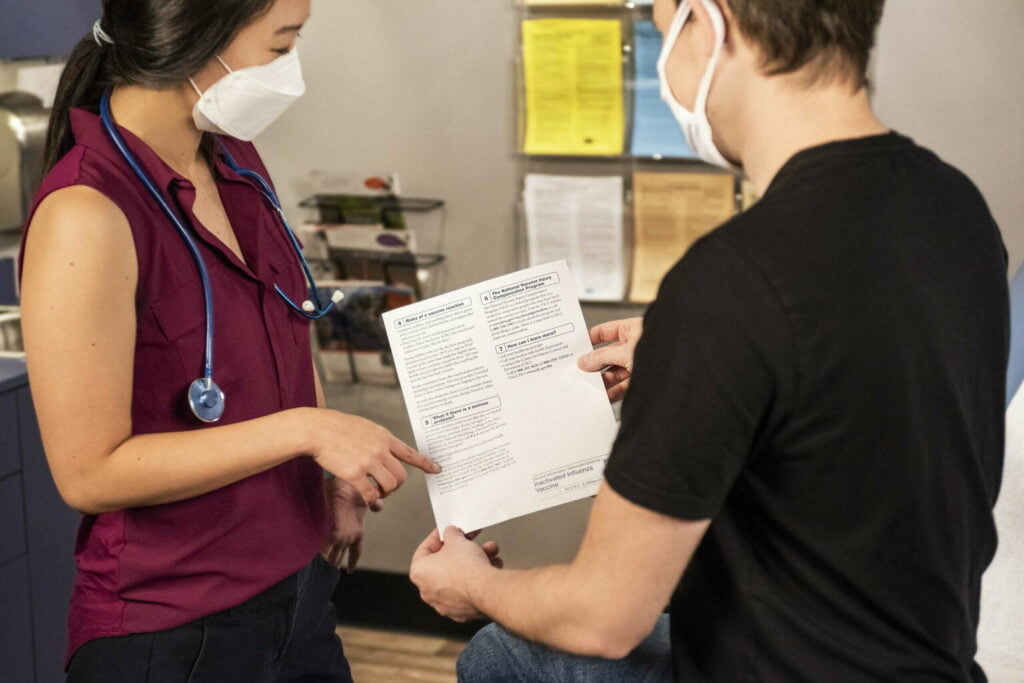In today’s world, where information is at our fingertips, health decisions seem more complicated than ever, and health literacy has never been more critical. But what is health literacy, and why does it matter to each of us? Let’s explore this essential aspect of our lives in an engaging way.

What is Health Literacy?
At its core, health literacy is about finding, understanding, and using health information to make informed decisions about our health and healthcare. It’s a multifaceted skill that encompasses more than just the ability to read medical pamphlets; it involves calculating medication doses, following pre-surgery instructions, or understanding nutritional labels.
A Tale of Two Definitions
Previously, health literacy was simply about obtaining, processing, and understanding basic health information. However, recent definitions have evolved to emphasize the use of health information to make well-informed decisions and recognize the role organizations play in providing accessible health information.
The Importance of Health Literacy:
Understanding Medication Instructions
A fundamental aspect of health literacy is the ability to comprehend medication instructions. Without this understanding, individuals are at risk of making medication errors, which can range from minor mishaps to severe consequences. Incorrect medication usage can lead to adverse drug reactions, hospitalizations, and in extreme cases, death. The complexity of medical terminology and instructions often exacerbates this issue, highlighting the need for clear communication from healthcare providers and simplified information for patients.
Navigating the Healthcare System
Health literacy also plays a vital role in navigating the healthcare system. It includes understanding appointment schedules, medical bills, insurance coverage, and the nuances of different healthcare services. A lack of health literacy can result in missed appointments, financial strain due to misunderstood billing, and underutilization of available healthcare services, worsening health outcomes.
Chronic Disease Management
For individuals with chronic conditions, health literacy is paramount. Effective management of chronic diseases such as diabetes, heart disease, and asthma requires patients to monitor their symptoms, adhere to treatment plans, and understand when to seek medical attention. Low health literacy has been linked to poorer management of these conditions, higher rates of hospitalization, and an overall decrease in the quality of life.
Preventive Health Measures
Health literacy influences individuals’ engagement in preventive health measures, such as vaccinations, screenings, and lifestyle modifications to reduce the risk of chronic diseases. People with high health literacy are more likely to participate in these preventive measures, which can lead to early detection of health issues and reduce the risk of serious health complications later on.
Impact on Healthcare Utilization and Costs
The implications of health literacy extend to healthcare utilization and costs. Individuals with low health literacy may have difficulty accessing healthcare services, leading to delayed treatment and increased use of emergency services. It not only affects their health but also contributes to higher healthcare costs. Research has shown that improving health literacy can lead to more efficient use of healthcare resources, reducing unnecessary hospital visits and lowering healthcare costs.
Improving Health Outcomes
Ultimately, health literacy’s importance lies in its impact on health outcomes. Higher health literacy is associated with better health status, more effective chronic disease management, and higher life expectancy. It empowers individuals to make informed health decisions, engage actively in their healthcare, and achieve better health outcomes.
Bridging the Gap:
Bridging the gap in health literacy requires a multifaceted approach, emphasizing clear communication, accessibility, and cultural competence. Here’s how we can collectively improve health literacy:
Clear Communication is Key
Health information should be straightforward to understand. It involves:
- Using Simple Language: Medical jargon and complex terminology should be avoided or clearly explained.
- Organizing Information Effectively: Information should be structured to highlight the most important points first, making it easier for readers to grasp the essential messages.
- Active Voice and Personalization: Using an active voice and directly addressing the reader can make information more relatable and easier to follow.
Making Health Information Accessible
Accessibility goes beyond just the readability of text; it encompasses the overall ease with which people can find, understand, and use information:
- Digital Accessibility: Ensuring that online health resources are accessible to people with disabilities, such as those requiring screen readers or alternative input devices.
- Physical Accessibility: Printed materials should be available in places frequented by the community, such as libraries, community centres, and clinics.
Cultural Competence
Understanding and integrating the cultural context of the target audience is crucial:
- Culturally Relevant Examples: Health information should include examples and scenarios that resonate with the audience’s cultural background.
- Language Diversity: Offering materials in multiple languages can significantly improve access for non-English speakers.
Empowering with Resources, Training, and Tools
Organizations can play a pivotal role by providing resources and training aimed at both health professionals and the public:
- Professional Development: Training healthcare providers and staff in communication skills to improve patient interactions.
- Public Education Campaigns: These campaigns involve conducting workshops, seminars, and other educational programs to teach the public about health literacy and how to access reliable health information.
Utilizing Technology and Media
The use of technology and media offers innovative ways to improve health literacy:
- Mobile Apps and Online Portals: Developing user-friendly digital tools that provide easy access to health information and services.
- Social Media Campaigns: Leveraging social media platforms to spread health literacy messages and create communities where individuals can share experiences and learn from each other.
Community Engagement and Feedback
Engaging with the community to get feedback on health materials and programs can ensure that efforts are relevant and effective:
- Focus Groups and Surveys: Gathering insights from the community about their needs and preferences regarding health information.
- Collaboration with Community Leaders: Working with respected community figures to effectively tailor messages and disseminate information.
Policy and Advocacy
Advocating for policies that prioritize health literacy can lead to systemic changes:
- Health Literacy in Policy Making: Integrating health literacy considerations into health policy development and implementation.
- Funding and Support: Securing resources for health literacy programs and research to explore new methods of improving public understanding of health information.
Improving health literacy is a community-wide effort that requires the commitment of healthcare providers, organizations, policymakers, and individuals. By focusing on clear communication, accessibility, cultural competence, and leveraging technology, we can bridge the gap in health literacy and empower people to make informed decisions about their health and healthcare.
The Bottom Line:
In summary, health literacy is crucial to managing our health and navigating the healthcare system. By improving our understanding and application of health information, we can all take steps toward a healthier, more informed future.
Frequently Asked Questions:
Who is affected by low health literacy?
Nearly nine out of ten adults face challenges with health literacy at some point. This can be especially pronounced during stressful health situations where even those with high literacy skills may struggle.
How can I improve my health literacy?
Start by asking questions during medical appointments, seeking out reliable health information sources, and practising reading and understanding health-related materials. Participation in community education and using digital tools wisely also help.
Why do some people have low health literacy?
Factors include complex medical information, personal education and background, language barriers, and the healthcare system’s complexity.



